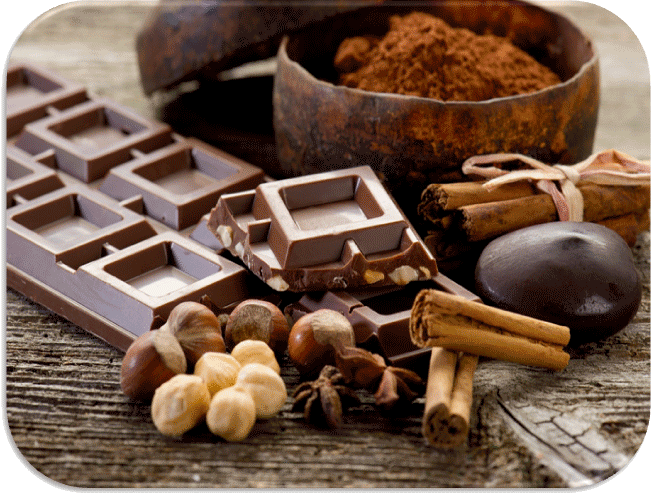All phases of Chocolate

An extract of the original document…
TEMPERING
This operation consists in bringing the CHOCOLATE to specific temperatures which fluctuate from 45-50° to 30°C and occasionally lower, to stabilize it for processing. The process follows and is represented graphically by a heat curve or crystallization curve. It serves to guarantee that the chocolate will remain shiny over time and that the cocoa butter crystals will remain stable so that the fat does not separate with small variations in temperature. At this point the coating, the basic mixture, can be moulded.
First, a look at the composition of the cocoa butter crystals:
Type Weight Fusion Point
Beta 80% 36°C
Alpha 15% 42°C
Gamma 5% 44-45°C
The chocolate-maker must follow this procedure:
- bring ¾ of the mixture to a temperature of 25-28°C by movement (oxygenation or emulsion). Stable crystals are obtained in cocoa butter by this mixing process.
- add the coating to the remaining ¼ of the mixture (which must be kept warm) and by mixing them the temperature automatically rises to 23-32°C.
Thus it is possible to obtain a fairly fluid mass without compromising the stability of the cocoa butter crystals.
PREPARING CHOCOCLATE
Chocolate is a sweet confection obtained by mixing sugar with the right amounts of cocoa powder, cocoa mass, vanilla, cocoa butter, etc..
Making chocolate was a process known in the 17th century but it was not refined until the 19th century, in 1828, when the Duchman Conrad Van Houten discovered a new method to extract cocoa butter from cocoa beans, using a press called “moulinets”. Thus, the separately obtained cocoa butter could be added to the ground cocoa beans so as to make the chocolate mass more malleable, smooth and capable of absorbing more sugar.
MANUFACTURING PROCESS
- cleaning
- pre-drying
- mixing
- winnowing
- roasting
- refining
- conching
- tempering
- moulding
To be continued…


